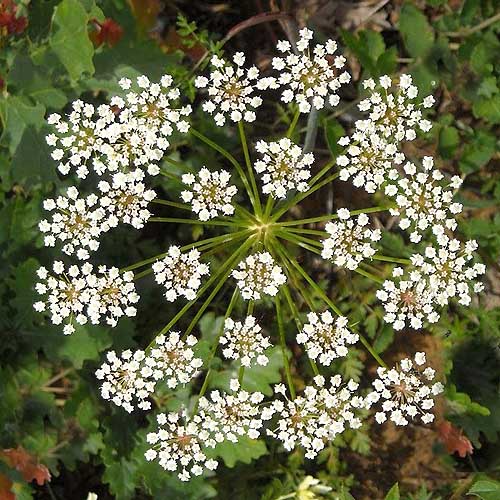

Large roots can be cut shorter than small roots and still have an adequate food supply for root and shoot growth. Root cuttings are typically 2 to 7 inches (5 to 18 cm) in length depending upon root diameter. At this time of year, healthy roots have ample stored food (carbohydrates) that will support root development. Root cuttings (Figure 6) are usually taken from plants in early spring or late winter before they start growing. New shoots and roots will emerge where the veins were cut. Sometimes it is helpful to pin these leaves to the moist medium with small stakes or toothpicks. Leaf cuttings of some plants, such as the Rex begonia, are first wounded by cutting the underside of the main veins before placing the leaf surface flat and in firm contact with the propagation medium. Roots and new shoots will start at the base of the leaf. Stick leaf cuttings upright in the propagation medium making sure the basal end of the cutting is inserted into the propagation medium. Begonias and African Violets are commonly propagated this way. Leaf CuttingsĪ leaf cutting (Figure 4) may be comprised of only the leaf or the leaf and petiole (leaf stem). Some talc formulations also contain a fungicide to protect the cutting from disease. These commercial preparations are available at most garden centers in various concentrations, suited for easy-, moderate-, or difficult-to-root plants. The bottom 1/2 inch (1.2 cm) of the cuttings are dipped into the product before sticking them in a medium. (Warning: the odor may be offensive.) Rooting can be enhanced with commercially available products called rooting hormones. Packaged sterile media can be purchased, or small quantities can be sterilized by placing a 2-inch (5 cm) layer of moist medium on a tray in an oven or barbeque grill at 220☏ (104☌) for 1 hour.
Pdf info about anise tree images free#
The medium should drain freely and be free of disease, organisms, and weed seed. Leaves are removed from the bottom 1 inch (2.5 cm) of the stem and the cuttings are then stuck upright in a medium (i.e., soil mixture/substrate) just deep enough to hold them upright, usually 1/2 to 1 inch (1.2 to 2.5 cm).Ī mixture of equal volumes of peat moss and coarse perlite is a suitable rooting medium for most plants, but combinations of other materials such as shredded peat, vermiculite, sand, and coir are also satisfactory. Cuttings 4 to 6 inches (10 to 15 cm) in length are appropriate for most plants. Stem cuttings are removed using a clean, sharp knife or pruner. Cuttings should be taken from healthy plants and placed in a warm, humid environment to hasten root development and prevent them from drying. Cuttings can be made from stems, roots, leaves, or combinations of plant parts (Figure 1). The most common asexual method is cuttage. It is especially useful for plants that are difficult or impossible to propagate from seed.

The most important reason to use asexual propagation is to reproduce plants with the same characteristics as the parent plant. Additional information can be found in this online index. Methods of propagating common Florida landscape plants are presented in Table 1. Information on budding and grafting propagation methods can be found in Propagating Fruit Crops in Florida (SP171) a for-sale booklet from the UF/IFAS Extension Bookstore ( ). Sexual propagation involves starting plants from seed, while asexual propagation involves multiplying plants from vegetative plant parts such as shoots, roots, and leaves, or specialized organs such as bulbs and corms. There are two types of propagation techniques: sexual or asexual. Home gardeners can thereby increase the number of plants they have and decrease costs. Most plants grown for Florida landscapes or as houseplants can be easily propagated.


 0 kommentar(er)
0 kommentar(er)
